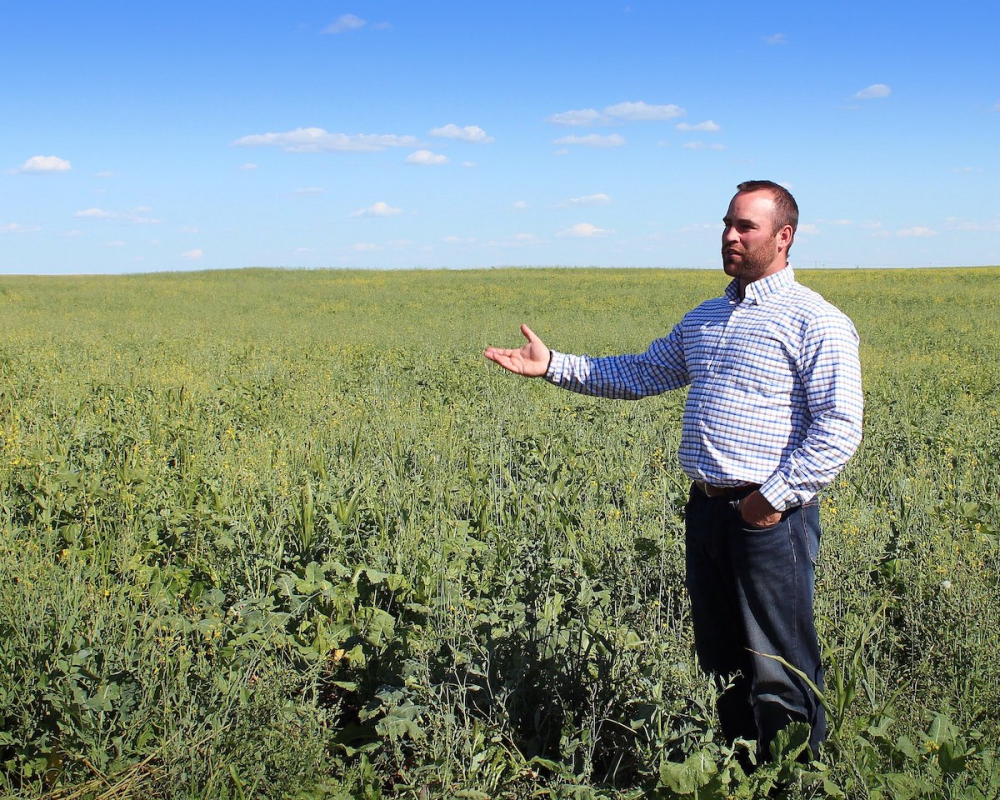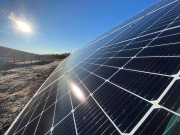Jordan Webber wears many hats. He has experience in banking, works in economic development for Starland County and sits on the board of the Alberta Solar Co-op. But his heart is in farming. He is a fifth generation farmer on land his family has owned for 100 years. He describes himself as “a biologist by training, a banker by trade, and a farmer by blood.” Jordan recently took the Pembina Institute on a tour that extended from Sheerness Coal Power Plant near Hanna to his farm north of Coronation.
On the tour, we heard about the challenges Hanna is facing from the coal phase out and the uncertainty regarding what the future may hold for its residents. While views on renewable energy in the area are mixed, some want to take advantage of the energy diversification happening in Alberta. Whether it is saving on electricity costs to run farming operations through micro-generation, or the potential for investment in communities, they see the economic benefits of renewable energy.
In particular, the idea of community-owned renewable energy is gaining traction. Community energy projects are typically larger than power generation for personal use (i.e. micro-generation), but smaller than a utility-scale facility, which produces a minimum of 5 MW. The Alberta Solar Co-op is proposing a 1-2 MW project, which would be approximately 3,500 to 7,000 solar panels. However, community energy projects, such as those by the Saskatchewan Environmental Society Solar Co-operative, can be much smaller. The SES Solar Co-op projects average just over 80 solar panels per project and have an average capacity of 25.8 kW.
The most common form of community renewables are owned jointly by members of a community that invests in the project and share in the benefits. These types of projects are attractive because they keep more money and jobs in the local community. In fact, community energy projects can lead to up to 2.8 times more employment and 47 per cent more economic activity than projects developed by entities from outside the community.

The Alberta Solar Co-op has been trying for years to take advantage of these benefits by developing a solar project, but one of the key challenges it is facing is the number of projects in the connection queue at distribution substations. It is more cost effective for smaller electricity generators to connect to a distribution substation instead of a transmission connection in order to deliver electricity to the grid. However, each substation can only take up a limited amount of capacity depending on its rating and the local grid. There are two substations in Starland County and there are already three applications on each substation with the Alberta Utilities Commission to connect projects. The current applications exceed the capacity of each substation.
To make matters worse, the system favours larger companies with capital because a 50 per cent deposit is required to hold a place in the queue. But community energy projects don’t have that kind of capital at such an early stage. As a result, it is difficult for community projects to compete with the large industry incumbents.
But overcoming these kinds of challenges is nothing new in communities like Coronation. In the 1940s, when the Alberta government asked the utilities to electrify rural Alberta, the utilities refused because the population base was not large enough to justify the expense of building the infrastructure. Alberta farmers responded by creating their own co-ops, known as Rural Electrification Associations (REAs). Many still exist today. In fact, Coronation was built around the co-op model, which has left a legacy. The wire lines, grocery store, veterinary clinic, seed cleaning facility, and natural gas distribution all began as co-ops to meet the needs of the local residents.
Jordan embodies this sense of resilience. His house is “off-grid,” powered by solar, wind, batteries, and a natural gas generator as a final backup. The decision was based mostly on economics. When he wanted to connect his new house to the grid, he was told it would cost $120,000 to build the required infrastructure. However, he was able to install his off-grid system by himself for half the cost of connecting to the grid.
It’s this legacy of cooperatives combined with a sense of independence, resilience, and ingenuity that make community energy seem like a perfect fit in certain areas of Alberta. Many people see the economic benefits of renewable energy, and the demand exists to build community energy projects here. But without policy to level the playing field for community energy projects, they won’t be built and the benefits of community energy will go unrealized.









